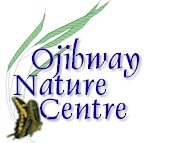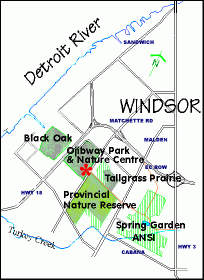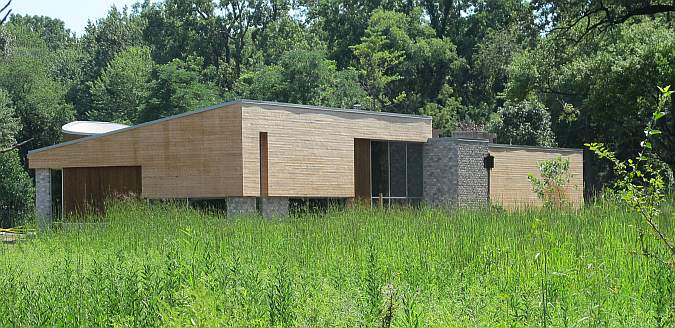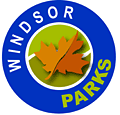
Main Menu
Site Map & Links
Map of Ojibway
Other Natural Areas
BIRDING
Latest Sightings
Birders Guide to Pelee & Essex Co.
Local Rare Bird Alerts
Ojibway Bird Checklist
Christmas Bird Counts
Point Pelee National Park

Birding Guide to Ojibway
A visit to the Ojibway Prairie Complex in Windsor can be a rewarding experience for birders with over 240 bird species recorded. In addition, the tallgrass prairie and oak savanna communities provide an opportunity to view wildflowers, butterflies and other wildlife seldom encountered elsewhere in Ontario.
Ojibway Prairie Complex is made up of four municipal natural areas and a provincial nature reserve totalling over 350 ha.
In spring and fall these parks function as migrant traps for many birds, they are islands of habitat in an otherwise poor environment for food and shelter. In the early morning warblers, thrushes and other migrants can often be seen flying into Ojibway from neighbouring residential areas. Groundings of migrants, especially during periods of bad weather can produce impressive concentrations of birds in these parks, up to twelve warbler species in a single choke cherry!
Walking and bicycle trails wind through tallgrass prairie, savanna and oak woodland that support common nesting species such as Tufted Titmouse, Red-bellied Woodpecker, Carolina Wren, Ring-necked Pheasant and Indigo Bunting.
Some rarities of past years include Yellow-crowned Night-Heron, Lewis's Woodpecker, ďAudubonísĒ Warbler and Dickcissel.

1. Ojibway Nature Centre, Ojibway Park.
From E.C. Row Expressway take Matchette Road south one kilometre to the park. Most visitors visit here before exploring other regions of the Complex. Windsorís Department of Parks & Recreation operates the Ojibway Nature Centre which is open year-round (free admission). Information on recent bird sightings, checklists and trail maps are available from the naturalist staff. The Nature Centre feeders attract titmice, chickadees, nuthatches, cardinals, goldfinches and jays year round. A covered deck provides easy viewing during inclement weather and additional feeders are visible from inside the centre.
This 66 ha park supports exceptional wet Pin Oak and dry Black Oak woodland. Species such as Eastern Screech-Owl, Tufted Titmouse, Red-bellied Woodpecker and Carolina Wren are common residents. Flowering trees and watercourses attract many migrants in spring and fall.
2. Ojibway Prairie Provincial Nature Reserve. The provincial nature reserve is located on the east side of Matchette Road opposite Ojibway Park. The Nature Centre parking lot serves both properties. Over 100 ha of tallgrass prairie, oak savanna, thickets and woodland are accessible by walking trails.
While the wildflower show is best in late July or August, nesting birds are more easily found in spring. Cooperís Hawk, American Kestrel, Ring-necked Pheasant, American Woodcock, Yellow-billed Cuckoo, Eastern Bluebird, Orchard Oriole, Indigo Bunting and occasionally Red-headed Woodpecker can be found in the reserve. Sometimes a pair of Yellow-breasted Chats can be found by searching thickets and bramble patches.
3. Tallgrass Prairie Heritage Park. This 18 ha municipal park is located on the north side of the nature reserve along the Titcombe road allowance.
A series of small ponds attract species such as Green Heron, Belted Kingfisher, Warbling Vireo and Baltimore Oriole. Trees along the pond edges are a good spot for warblers in migration.
4. Black Oak Heritage Park. This municipal park is located one kilometre west of Ojibway Park off Broadway Street. A two kilometre trail begins at Broadway Park and winds through the northern half of the park. This undeveloped 52 ha parkland supports one of the finest Black Oak/Pignut Hickory woodlands in Ontario.
Woodland nesting species can be hard to find in Essex County but this park is a good spot for birds such as Wood Thrush, Ovenbird, Scarlet Tanager and Rose-breasted Grosbeak. Adjacent to the park are several open fields, which are good for migrant sparrows, finches and warblers.
5. Spring Garden Natural Area. Over 120 ha of public land is located south of Spring Garden Road between Huron Church Road and Malden Road. The Windsor Bikeway winds through the site providing convenient access to forest, savanna and prairie habitats.
Here is one of the richest sites for butterflies anywhere in Canada (up to 49 species in a single day). Yellow-breastd Chat, White-eyed Vireo and Blue-winged Warbler have nested here in recent years.
6. Other local migrant traps include the tall cottonwoods by the ponds at Malden Park and the wooded trail through Oakwood Bush (between South Windsor Arena and Oakwood Community Centre). Grassland birds such as Bobolinks, Eastern Meadowlarks and Savannah Sparrows are more easily found on the open hillsides at Malden Park.
Back to the top!
